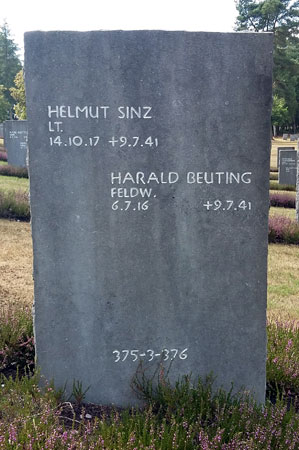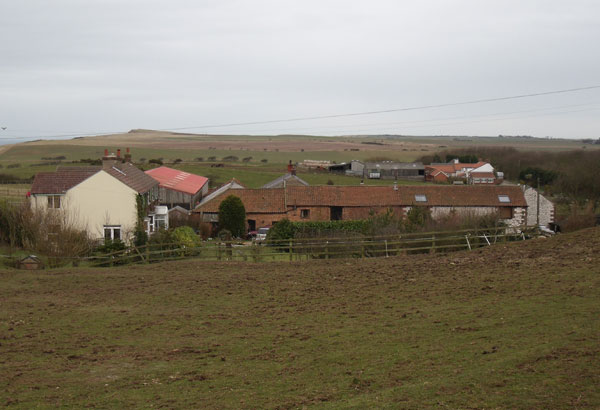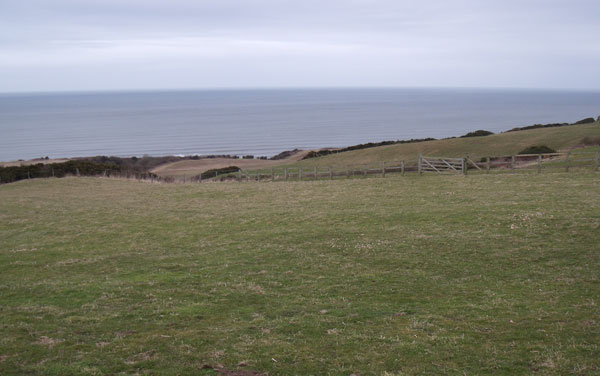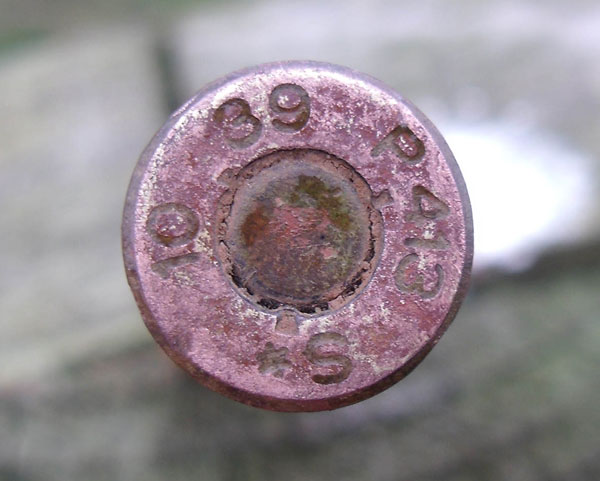During the evening of 9th July 1941 the crew of this aircraft and at least two others aircraft set out from their base at Schipol, Holland to carry out
anti-shipping patrols of the North Sea between Whitby and Holy Island and three of these aircraft would not make it back home. All three flew in from the
sea very low to avoid being picked up by ground-based radio detection along the East Coast but there was thick fog blanketing the east-coast and it is
doubtful the crew of this aircraft saw the ground before it was too late to avoid it. At just before midnight this specific aircraft struck the top of
a barn at Speeton and crashed into a field near Millholme Farm, Speeton killing all four airmen. All four were buried at Bridlington Cemetery but there
remains have now been re-buried at Cannock Chase Military Cemetery in Staffordshire. The farmhouse was slightly damaged although no-one in the farm is
believed to have been injured, the damaged chimney stack was later repaired and the house was extended in later years. A second aircraft was crash
landed in fields nearer Flamborough later that night and a third aircraft would crash at Sleights, near Whitby.
Pilot - Lt Helmut Sinz. Buried Cannock Chase Military Cemetery, Staffordshire.
Observer - Fw Harald Beuting. Buried Cannock Chase Military Cemetery, Staffordshire.
Wireless Operator - Ufz Wilhelm Quodt. Buried Cannock Chase Military Cemetery, Staffordshire.
Gunner - Fw Otto Donder. Buried Cannock Chase Military Cemetery, Staffordshire.
The graves of the four airmen killed in this accident.
I was able to visit the site with air historians Eric Barton, Ken Reast and Albert Pritchard in March 2010. Eric had
spent time in the village in the weeks prior to our visit and found Speeton resident, Mr Coleman, who was living in the
village at the time and remembered the night this and the other Ju88 crashed. Eric agreed with the landowner for a site
visit and Mr Coleman agreed to come with us to this site. A few small remains were located in a paddock. I would like to
thank Eric for inviting me on the day and also to thank Mr Coleman, without whom the search would have been much harder.
The aircraft had initially struck the end of a barn and then took the chimney stack and part of the roof off a neighbouring
farm, as shown in the photograph above before disintergrating across a field below the farm, shown in the photograph below.
Please note the farm and the land are private, no public access is normally available.
A small piece of the aircraft.
The casing of a bullet found at the site, the markings state it was made in 1939 (39), was part of batch ten (10) made by the Deutsche Waffen-u. Munitionsfabriken A.G., LŻbeck-Schlutup, Schleswig-Holstein (P413) and the case being made from brass (S*).








As with all Luftwaffe losses in Yorkshire please refer to Bill Norman's "Broken Eagles" book for further details of this incident and any other Luftwaffe loss in Yorkshire.